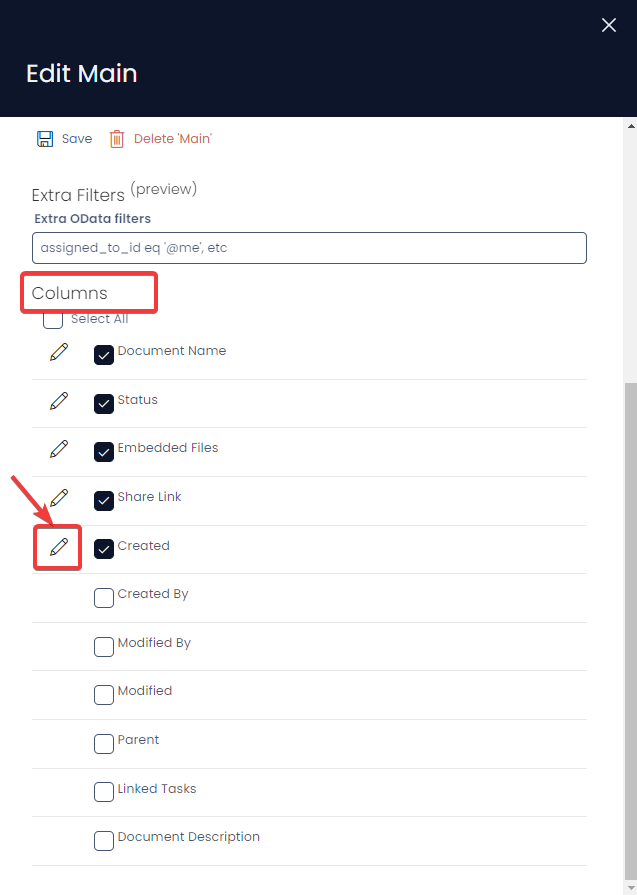Viewing Dates and Files Using Tables
Viewing Date Data
Date Fields Can Appear as "Relative Dates"
Alternatively, you can change a date column so that it displays a description of the item's creation time and date. For example, a column with created 10 minutes ago will read '10 minutes ago', and a column with a date from last month will read '1 month ago', etc.
To enable relative dates:
- Press the Edit View button, located on the right-hand side of the Command Bar.
-
Scroll down to the Columns section of the Edit View Sidebar.
-
Press the Edit Column button beside the name of the date column. The edit button is an icon of a pencil. (For this example, we will use the system default column titled Created, which is a date field that describes the date when an item was created).

- Save all changes, and return to the table.
Now, dates appear as times or dates relative to the current time and date.
Viewing File Data
Embedded Files Appear as Progress Bars
When viewing an Embedded Files column, the column will appear as a progress bar that indicates how many expected files have been uploaded. For example, in Rapid Standard's Policies module, each item is expected to have one policy document embedded. However, a system administrator could choose to create items with several embedded files that are expected.
The embedded files will appear as a progress bar. This allows you to visually see if all expected files for an item have been uploaded. Additionally, the progress bar will be followed by a fraction to show how many files are uploaded and how many are expected.
The Embedded Files Column Presents a List of File Slots
When clicking on the Embedded Files progress bar, an item description box will appear. The description box will indicate which types of files are expected, as well as a cross or a checkmark to indicate if that filetype has been embedded.
For example, an expected embedded file that has not been uploaded will appear with a cross, as follows:
Embedded Files Can Be Opened from an Embedded File Slot
If an expected embedded file has been uploaded, it will appear with a checkmark as follows:
:::[Note:] that if a file has been embedded, you can click on the embedded file's name and open the embedded file. This will open the attached file in a new browser tab. :::